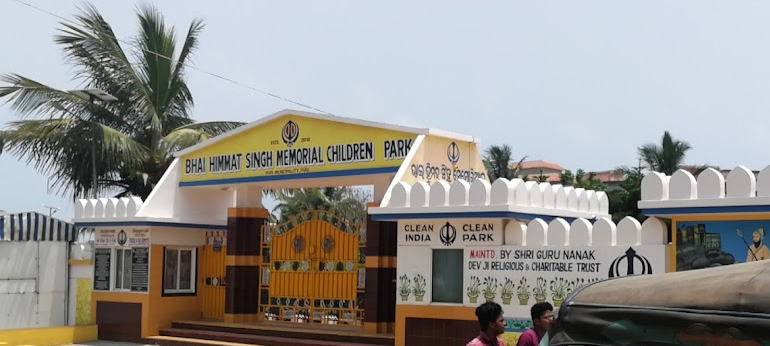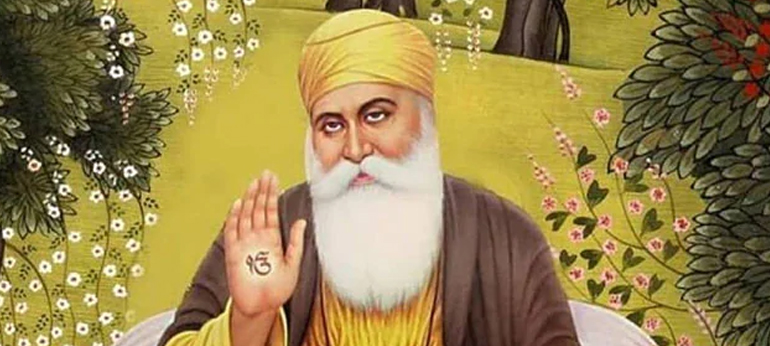Guru Nanak, the voice of compassion and universal love, set out from Punjab in 1497 A.D, to convey the message of One God and universal brotherhood of humanity in all directions. The long journeys he undertook for this purpose, the places he visited ,and important people of all the religions he met, are mind boggling. Wherever he went, he dazzled the minds of the people, exhorted them to shed spiritual slavery, and invariably left a permanent imprint on their minds.
Guru Nanak undertook four Udasis i.e. long journeys, in four different directions. The first one was of longest duration and the destination was Jagan Nath Puri. This destination was carefully chosen. Puri was one of the four Dhams established by Shankracharya in 7th century, and later on it had become the prominent centre of Vampanthis. During the times of Guru Nanak, this philosophy of salvation had degenerated into the pleasures of flesh. Guru Nanak after touring the 'Kamrup Desh', which comprised the areas of Assam, Bengal and Orissa, reached Jagan Nath Puri in June, 1510 A.D. What happened there during Guru Jee’s visit is recorded in detail in every Janam Sakhi (biography of the Guru). Guruji stayed there for about one and half month, recited two important shabads(Aarti) like, "Gagan Mein Thal. Bhav Khandana Teri Aarti Hoai." which are part of Guru Granth Sahib and are recited by the Sikhs everywhere during Akhand Path. The historical context in which those shabads were recited is very important to project the philosophy of Guru Nanak.

Bhagat Jaidev's hymns, which he composed in his well known composition Gita Govinda at Puri, are also incorporated in the Guru Granth Sahib. Puri, therefore, has a place of pride in the mind of the Sikhs.
Puri acquired further importance in Sikh history as it contributed to Sikh history till the time of Guru Gobind Singh. After religious persecution of the Sikhs by Aurangzeb and other Mughal Emperors, it lost connection with the Sikhs as the Sikhs had to leave their religious places and had to go into hiding. Since then, the place has remained ignored and neglected by the Sikhs till today. In order to project the importance of Puri for the Sikhs, it is imperative to see its long historical connection with the Sikh history and the Sikhs. It is from this angle, that I have tried to trace the historical connection from the times of Guru Nanak till today.
After Guru Nanak, no Sikh Guru except Guru Tegh Bahadur undertook long journeys outside Punjab. The second Sikh Guru, Guru Angad Dev Jee, tried to consolidate Guru Nanak’s Bani and to propagate the same. For that purpose, Janam Sakhis of Guru Nanak's life and his visit to various places were got written in details. In the Janam Sakhi of Bhai Bala, Guru Nanak’s visit to Jagan Nath Puri is mentioned in great detail. Two places, Mangu Math and Bauli Math also find mention in the Janam Sakhi as being intimately connected with Guru Nanak’s visit to Puri. The third Guru, Guru Amar Dass, took further steps for propagation of Guru Nanak’s new creed and appointed missionaries for that purpose in different parts of the country. Bhai Mohan was the first missionary appointed for the area of Bengal and Orissa in about 1562 AD. The missionary work took a further fillip, when Baba Shri Chand accepted the supremacy of his father’s mission and his new creed, and undertook its propagation during the time of 4th and 5th Gurus. Baba Shri Chand, whose Udasi followers are now-a-days managing Bauli Math and Mangu Math in Puri, had become a Sanyasi and did not marry. During the last years of his life, he adopted Baba Gurditta, the eldest son of Guru Hargobind, the sixth Guru of the Sikhs, and entrusted to him the missionary work of Sikhism in various parts of India. Baba Gurditta under the guidance of Guru Hargobind opened many new missionary centres at far flung places.

